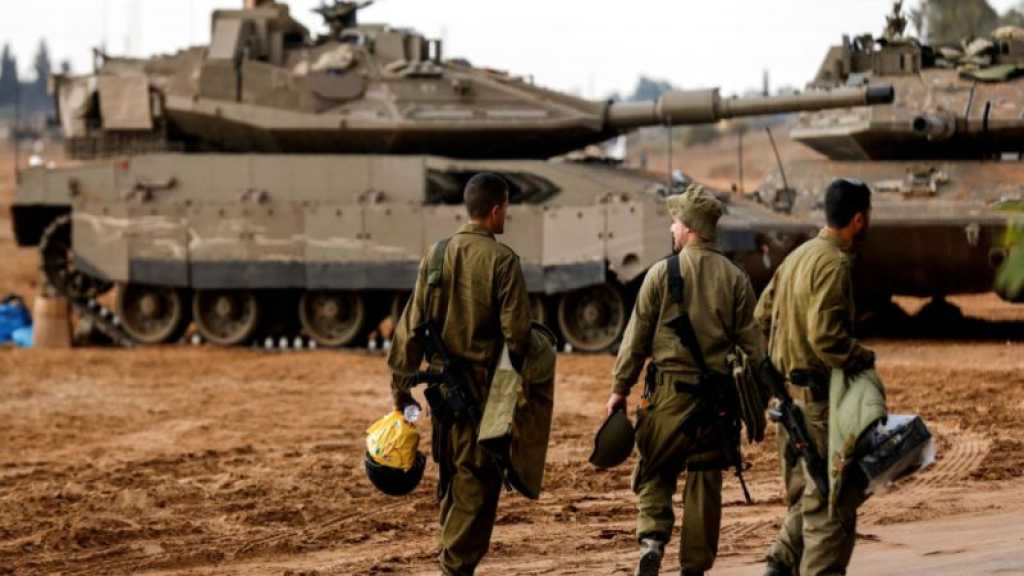
The War Between The Battles

Mohammad Bdeir
In the words of US Secretary of State Mike Pompeo, “Israel” is seeking to "prevent Syria from transforming into a second Lebanon." Hezbollah, on the other hand, is seeking to prevent transforming Lebanon into another Syria. In short, it can be said that these two claims summarize the escalating rhetoric between the party [Hezbollah] and Tel Aviv in the last few months, and perhaps years.
“Israel’s” announcement about “a second Lebanon in Syria” means not allowing Iran to fixate its military position in Syria, including the conversion of the Golan into an active front. Moreover, it means preventing establishment of Iranian military readiness – primarily the missile force – that would be activated when orders are given to head toward “Israel’s” strategic depth.
This phrase, "a second Syria in Lebanon", has not yet been integrated into the media’s vocabulary. It can be defined in two ways. A change in the rules of engagement between the resistance and “Israel”, as Sayyed Nasrallah said on Saturday. This will strip Tel Aviv of the ‘right’ to launch military strikes against targets on Lebanese territory it considers a threat – a threat that should be addressed in a preventive manner. The second definition is of Jewish origin. It simply speaks of transferring the "battle between the wars", which “Israel” has been waging in Syria for six years, into Lebanon.
The "battle between the wars" in short is a preventive attack strategy adopted by Tel Aviv after the outbreak of the Syrian crisis. Its main function is to prevent Hezbollah from expanding its capabilities. To do so, “Israel” targets strategic weapons transfers and stockpiles that Hezbollah has decided to acquire. However, the goal of this battle, which takes place in the periods of calm between major wars, is to manage the conflict with the forces hostile to “Israel” in the following framework:
First, to hold off the next major war.
Second, providing the permanent availability of favorable circumstances that make this war, when it erupts, possible, easy and quick to resolve, and with the smallest lowest possible civilian and military losses (see "Al-Akhbar", May 24, 2016). Several headlines in “Israel” have focused on the objectives of this battle, including the "balance breaking weapons". At the time, “Israel” meant by these weapons the advanced naval and air defense systems (in terms of accuracy and distance). Preventing the operational positioning of Hezbollah and the Iranian Revolutionary Guards in the Syrian Golan. And the overall Iranian positioning in Syria – the so-called "precision project" that Hezbollah is striving to acquire. It is intended to turn the party’s low-grade weapons into highly precise smart missiles.
The global war on Syria has drained the state and its army. It also occupied the axis of the resistance from its semi exclusive priorities. It is known, that this war constituted an opportunity for “Israel”, enabling it to embark on this battle, while betting on the likelihood of calm rather than a counter response. It becomes understandable that Tel Aviv’s battle between the wars only began after the outbreak of the Syrian crisis (about a year and a half into the conflict). It also becomes understandable why it was geographically confined there as the “Israelis” abstained from transferring it to Lebanon. This is due to the deterrence that the resistance established – the permeability of which it continually insists without the slightest respite.
It can be said that the escalating rhetoric in recent months between the two claims – "turning Syria into a second Lebanon" and "transforming Lebanon into a second Syria" – reflect more than anything else the growing “Israeli” feeling that the "battle between wars" has drained Tel Aviv and its usefulness has reached its end (there are voices inside “Israel” that have started talking about it).
On the one hand, the "symbolic" missile response on the Golan against recent attacks suggests that what once was will not necessarily be so in the future (see Al-Akhbar, January 22, 2019). This as the latest strategic estimation issued by the Institute for National Security Studies warning, that the window of opportunity offered by the Syrian war to “Israel” is closing, is indeed becoming more realistic than some think.
On the other hand, the high level of “Israeli” threats against the "accuracy project" in Lebanon reflects, more than anything else, the magnitude of Tel Aviv’s fear toward working inside Lebanon and the potential deterioration that this entails.
Sayyed Nasrallah's latest interview eliminates some ambiguities in this regard. His warning to Netanyahu about the continuation of his actions in Syria and calling on him not to miscalculate there as well as his unequivocal assertion that the resistance in Lebanon is in a state of practical endeavor to make Tel Aviv pay a painful price for any aggression on Lebanese territory pose as a primary declaration that the “battle between the wars” in Syria is nearing its end. They are also a final declaration that the battle cannot be cloned in Lebanon.
In theory, this means “Israel” has one of two options. It either retreats because it fears the price of moving forward with the existing strategy. Or it can venture and face the possibilities of rolling into a broad confrontation as Nasrallah pointed out.
This means that the philosophy on which the "battle between the wars" is based now faces an existential challenge with its constituents. Continuing with it for a long time or attempting to move it to the Lebanese arena will not only hold off the great war or decrease its estimated losses. It will also place “Israel” at the edge of the "war between the battles". The following would not necessarily be “Israel's” initiative, as was the case before.
Source: Al-Akhbar Newspaper, translated by website team
Comments



